
When it comes to superfoods, the elderberry stands out among its peers, offering an impressive array of health benefits and culinary delights from a tiny little berry.
Bursting with antioxidants, vitamins, and minerals, these dark purple berries have been used for centuries in traditional medicine.
While I, and many others, remember elderberry jam, made by grandma, these days, the elderberry’s popularity has skyrocketed far beyond the jam jar.
Let’s explore why you should grow an elderberry bush or several.
I’ll even throw in a few tips on cultivating this remarkable plant right in your backyard.
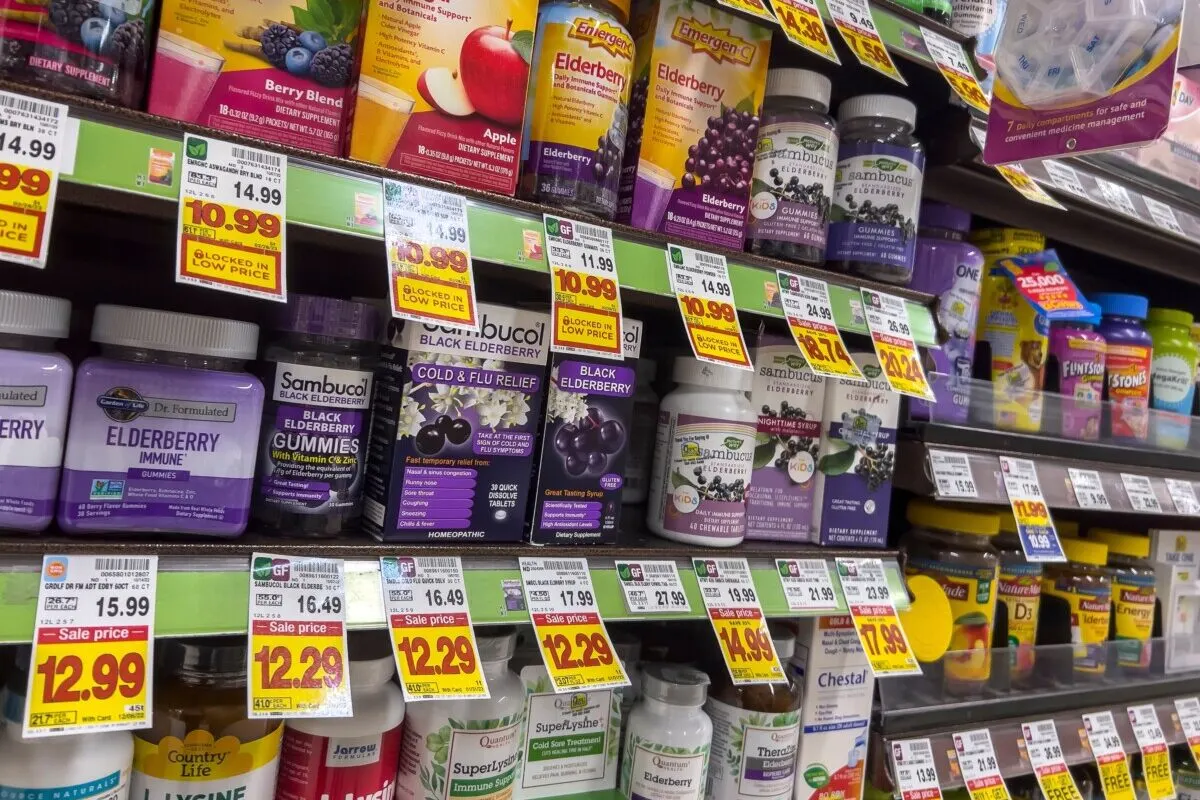
Unless you’ve been living under a rock, you’ve probably noticed that elderberry is everywhere these days. Maybe you picked up a bottle of elderberry syrup the last time you had a cold, or perhaps you’ve been introduced to the popular French aperitif – kir. Maybe you encountered it in a trendy farm-to-table restaurant. Like most gardeners, you probably thought, “Hmm, I wonder how hard these are to grow? Would it even be worth the space?”
The answer is a resounding, “Not hard at all,” and “Yes!”
1. Health Benefits That Pack a Serious Punch
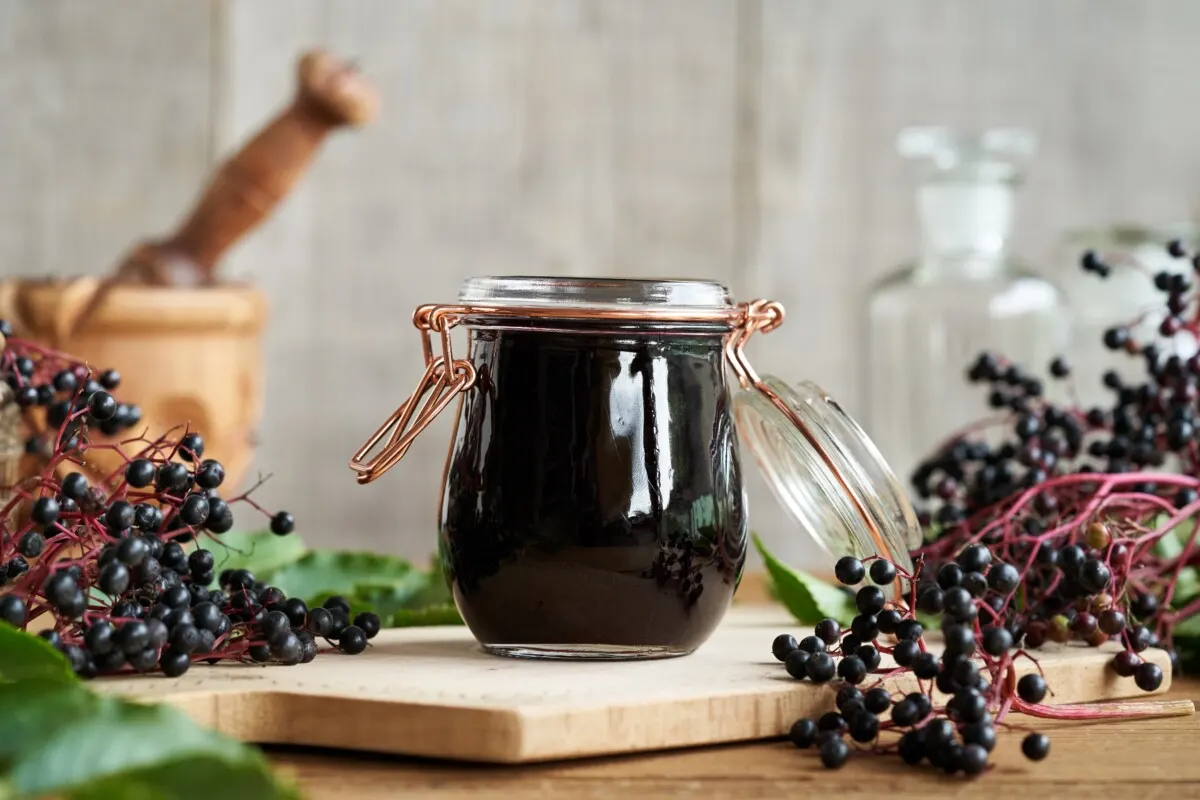
Elderberries are packed with immune-boosting properties. Research has shown it can help reduce the duration of colds and flu. They contain high levels of antioxidants, including anthocyanins (found in all purple fruits and veggies), which have anti-inflammatory and antiviral effects.
There are also studies suggesting elderberry can improve cholesterol levels and blood sugar.
Taking syrups or teas infused with elderberry can get you back on your feet quicker when the creeping crud catches up with you.
In our house, along with a shot of fire cider to start your day, we also add a splash of elderberry syrup to a glass of water or tea at the first sign of a cold. I credit my extremely short and mild case of covid this past Christmas to elderberry syrup.
2. A Superfood Show Off – Impressive Nutritional Profile
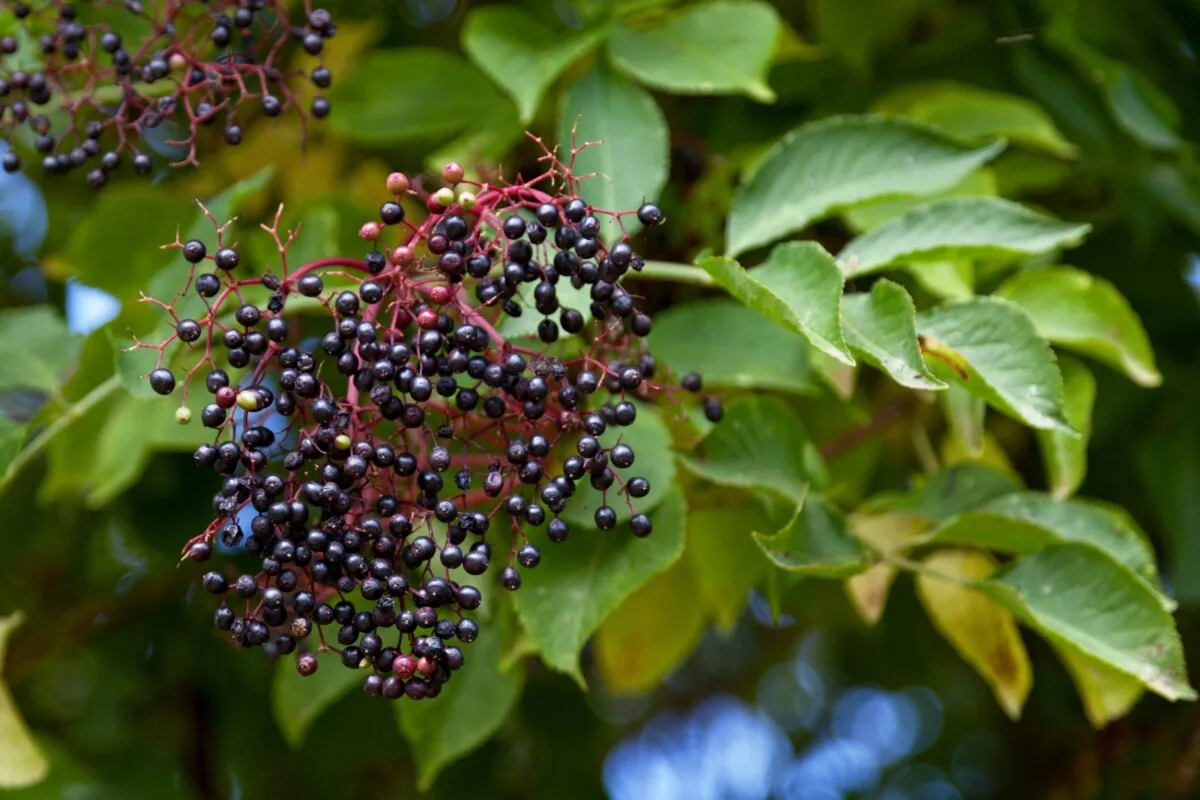
Looking for a nutrient-dense food? Look no further than the nutritional powerhouse that is the elderberry. They contain many vitamins and minerals, including vitamin C, vitamin A, potassium, iron, and dietary fiber. They also offer a good amount of flavonoids, a type of metabolite found in plants, which contribute to their antioxidant capacity.
You would be hard-pressed to find a better superfood to add to your diet than the mini and mighty elderberry. Who wouldn’t want a strengthened immune system, lower inflammation, lower cholesterol and digestive support – all from a plant growing in your backyard?
3. Your Newest Foodie Friend in the Kitchen
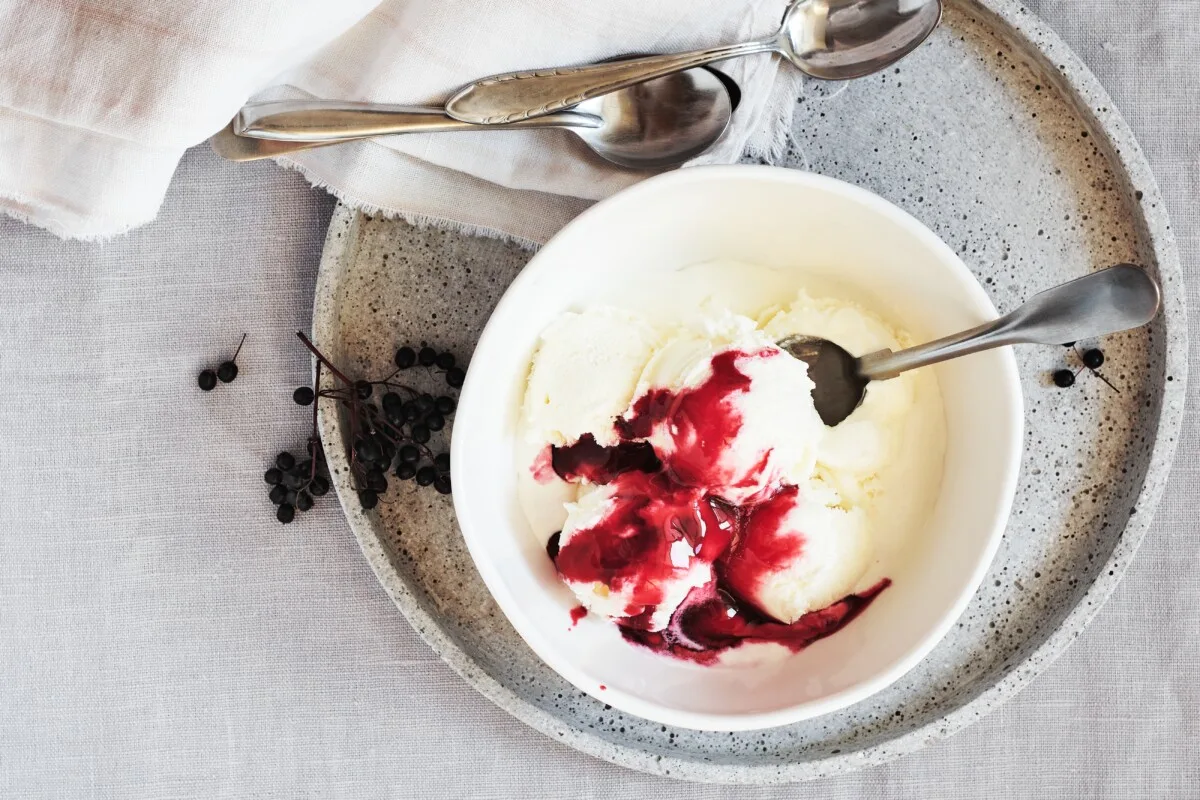
Oh sure, elderberries are good for you, but as a foodie, that’s not a good enough reason for me to put the effort into growing them. I mean, kale is good for you too, but, oh wait, nope, I grow that too.
Anywho, my fellow gourmets will agree; having fresh elderberries at your doorstep for your latest culinary creations is a good reason to grow them.
Apart from their health benefits, elderberries offer a rustic and flavorful option for those of us who enjoy cooking with the fruits of our gardening labors. They can be transformed into jams, jellies, syrups, and even wines. Elderberries’ deep, rich flavor lends itself well to desserts, sauces, and savory marinades.
And let’s not forget the flowers!
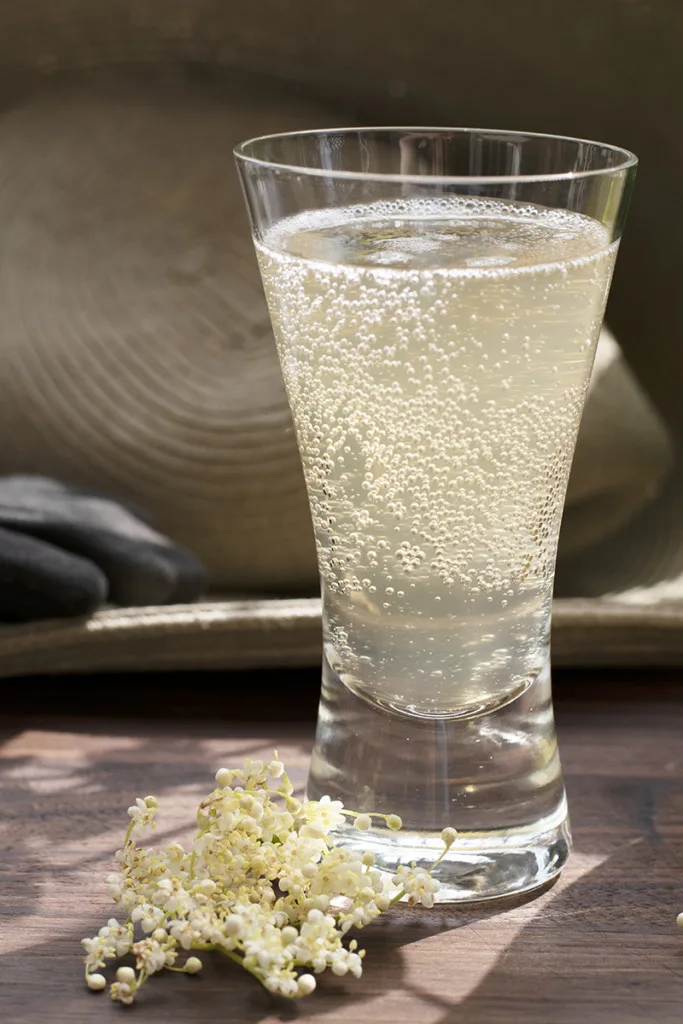
Elderberry flower cordial and fizzy bottles of elderberry champagne are a spring tradition in our home.
Growing elderberry bushes in your garden gives you a constant supply of this versatile fruit to experiment with in the kitchen. Not to mention, doling out packets of elderberry tea, bottles of homemade elderberry wine or savory elderberry sauce at Christmas sure helps make the case for planting one.
4. Attract Birds to Your Yard

Are you an avid birder looking to create a backyard haven for your feathered friends? Then you’ll want to consider adding an elderberry bush. Cardinals and grosbeaks are a couple of the many birds who love feasting on the purple berries each summer.
Not to mention the dense growth habit of elderberry bushes makes for an excellent nesting ground and safe shelter to hide in. Having a place where birds can retreat near your feeder setups is important in attracting numerous species of birds.
Planting specific trees and shrubs that appeal to birds is an excellent way to merge your love of gardening and bird-watching in your backyard.
5. Benefit Your Local Pollinator Population
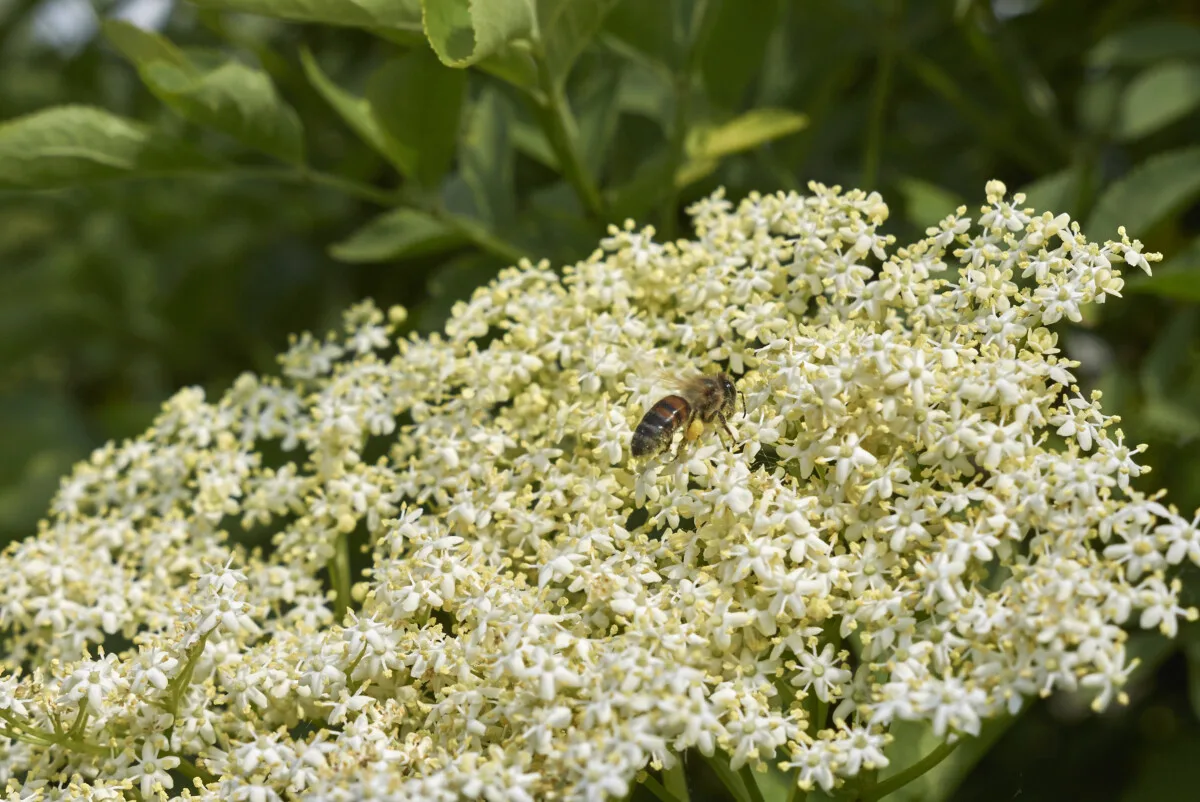
If doing your part to protect the declining pollinator numbers is important to you, add “providing food and shelter to pollinators” to the list of benefits of growing elderberries.
If you’ve ever passed an elderberry bush in full bloom in June, you’ve probably noticed it’s literally humming with activity. You can stand quietly nearby and hear all the buzzing of local pollinators moving from one cluster of elderflowers to another.
And as far as pollen density goes, the large umbels of elderflowers are hard to beat. Each cluster provides plenty of food and energy for hungry native pollinators. If you’re serious about a pollinator garden, you should consider planting an elderberry bush.
6. Elderberries Are a Cash Crop

Although not for everyone, plenty of homesteaders and gardeners are looking to supplement their income using the fruits of their land. With the popularity of elderberries, you could easily bring in a tidy side income by creating homemade elderberry syrups, teas or jams.
Even selling the berries, both fresh and dried, can be a lucrative side hustle.
One of our favorite local U-pick farms is the only place for miles around that offers U-pick elderberries. And believe me, if you want the joy of picking your own organic elderberries fresh from the bush, you’d better get your buns out of bed and be there the moment they open during elderberry season because they pick out fast!
7. Elderberries are an Attractive Flowering Shrub
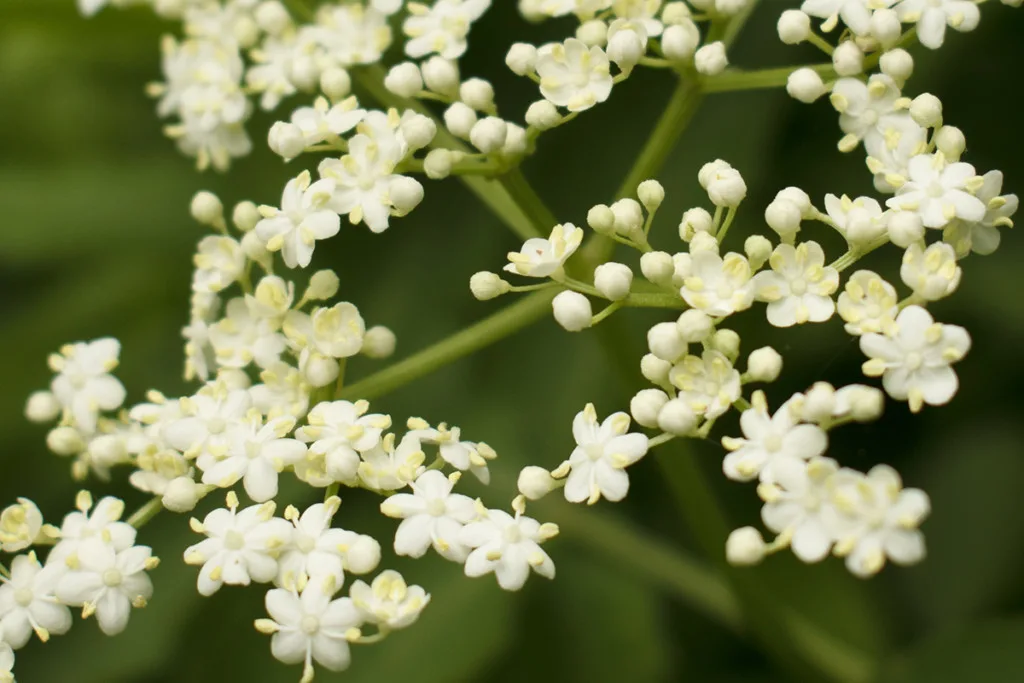
I’ve already discussed the many benefits of adding flowering shrubs and trees to your property. But with elderberry shrubs specifically, there’s one extra benefit – edible elderflowers. Not only are you treated to massive sprays of creamy star-shaped flowers in the spring, but you can whip up some truly wonderful creations with elderflowers.
Here are 25 elderflower recipes that go way beyond your traditional cordial.
8. Elderberry Shrubs Are Easy-to-Grow and Hardy
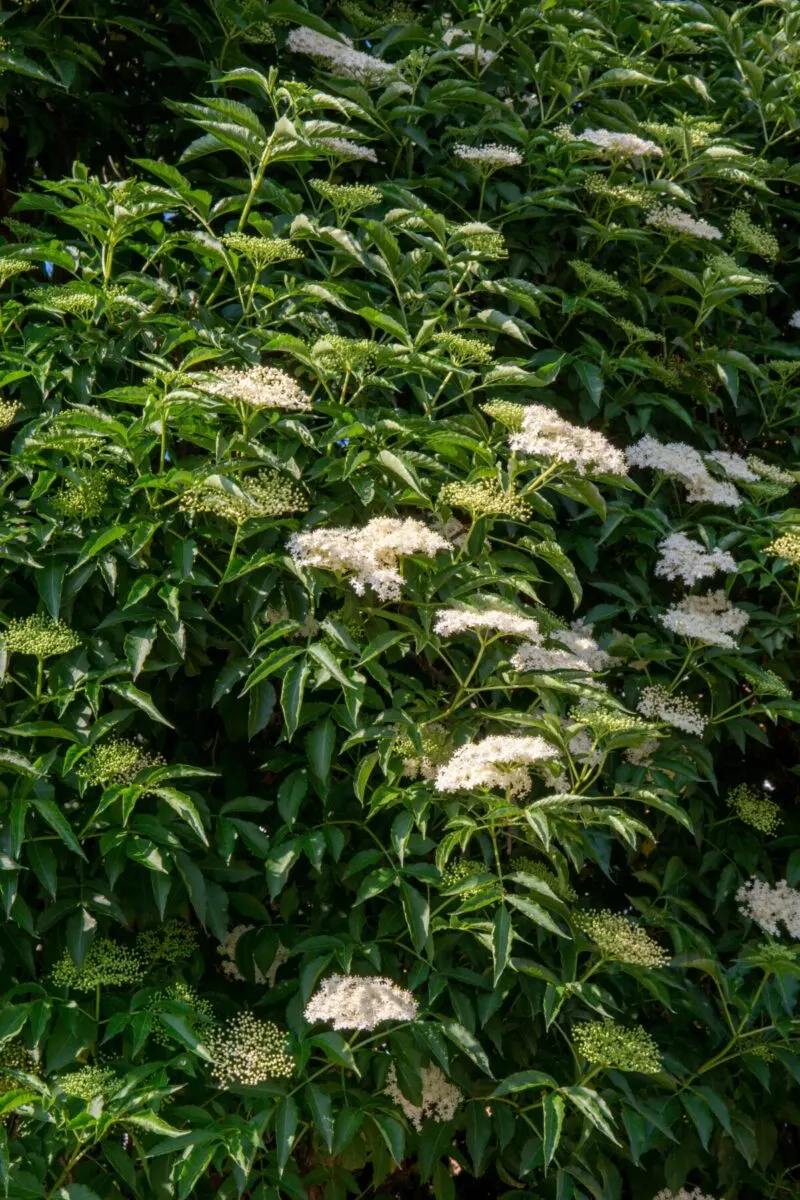
Did I mention that elderberry is easy to grow and pretty hard to kill? Elderberry bushes (Sambucus) are the perfect choice for both the new and experienced gardener. These deciduous shrubs are native to many regions across the globe, meaning they’re adaptable to a wide range of climates and growing conditions.
Most of them are unfussy and require little “extra” care once established. Once you plant one, you may be surprised by how many you spot growing wild, without a care, near you.
Choosing the Right Elderberry Variety for You
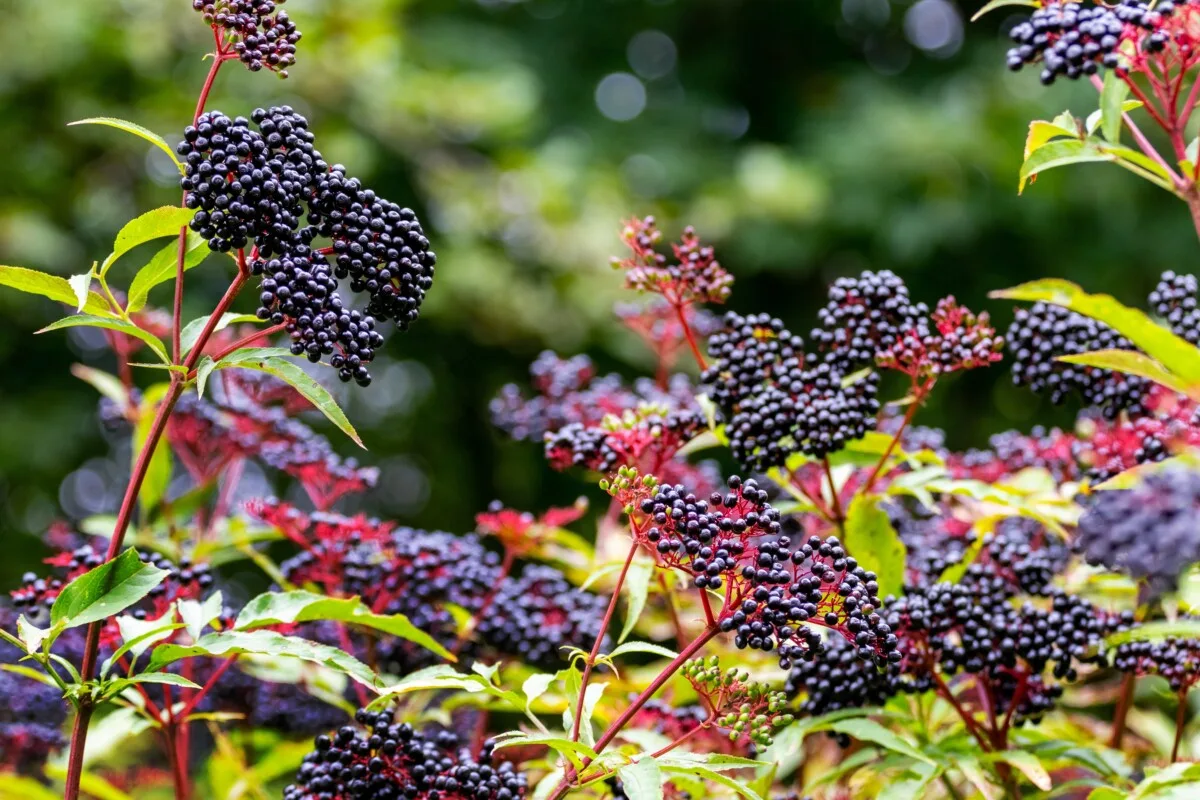
When selecting elderberry varieties for your garden, consider factors such as local climate, available space, and intended use. Ask for assistance at your local nursery, where they can recommend native species or a suitable variety for your region.
Planting and Propagation
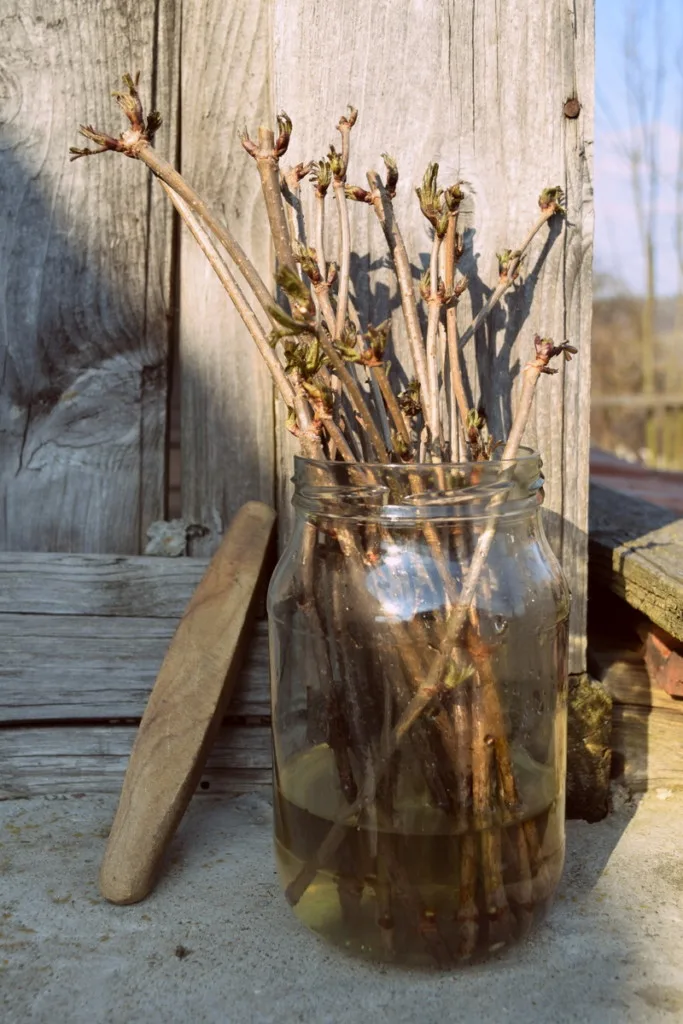
Elderberries can be propagated from cuttings, divisions, or purchased saplings. Plant them in late winter or early spring, ensuring each bush is placed around 6 feet apart to allow ample space for growth. Dig a hole slightly larger than the root ball and backfill it with soil, firmly tamping it down. Elderberries benefit from regular watering, particularly during their first year of growth. They prefer well-drained soil and full sun exposure but can tolerate partial shade.
Care and Maintenance
Elderberry plants are generally low-maintenance, requiring minimal care once established. However, to ensure optimal growth and productivity, it’s important to provide consistent moisture, especially during dry spells. Mulching around the base of the plants helps retain moisture and suppress weed growth. Pruning should be done in late winter or early spring to remove dead or damaged wood and encourage new growth.
Harvesting and Processing the Berries
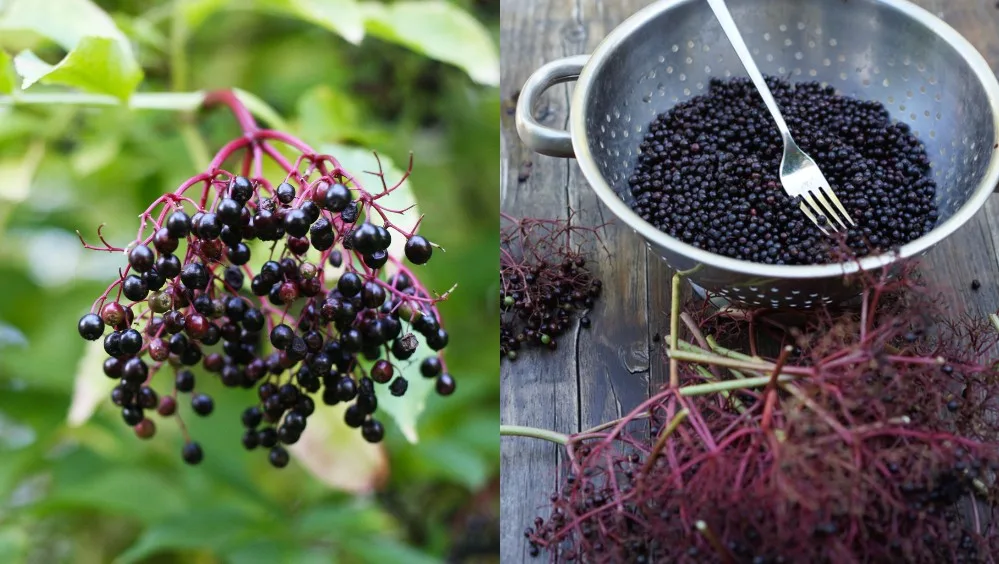
Elderberries typically ripen in late summer or early autumn, depending on the variety and location. The fruit clusters should be harvested when fully ripe, with a deep purple color and a slightly soft texture. Remove the entire cluster and gently separate the berries from the stems. Elderberries can be used fresh or preserved by freezing, drying, or creating homemade products like syrups and jams. When it’s time to harvest your berries, you’ll want to reference Elizabeth’s full elderberry harvesting guide.
Common Elderberry Issues
While elderberries are generally hardy plants, they can face some challenges. Birds are particularly fond of the berries, so consider using bird netting to protect your harvest. Additionally, elderberries can be susceptible to pests like aphids and borers. Regular inspection and appropriate organic pest control methods can help mitigate these issues.
Precautions and Safety
Though elderberries offer numerous health benefits, it’s important to note that the raw berries and stems contain toxic compounds. Proper processing, such as cooking, eliminates these toxins. Always cook elderberries before consumption and avoid consuming unripe berries or parts of the plant that are not intended for consumption, such as the leaves and bark.
Growing elderberries in your backyard can be a rewarding experience on many fronts. Whether you plant them to benefit your health, your table, your bottom line or the natural inhabitants of your garden, elderberries offer a treasure trove of benefits.

Get the famous Rural Sprout newsletter delivered to your inbox.
Including Sunday musings from our editor, Tracey, as well as “What’s Up Wednesday” our roundup of what’s in season and new article updates and alerts.

